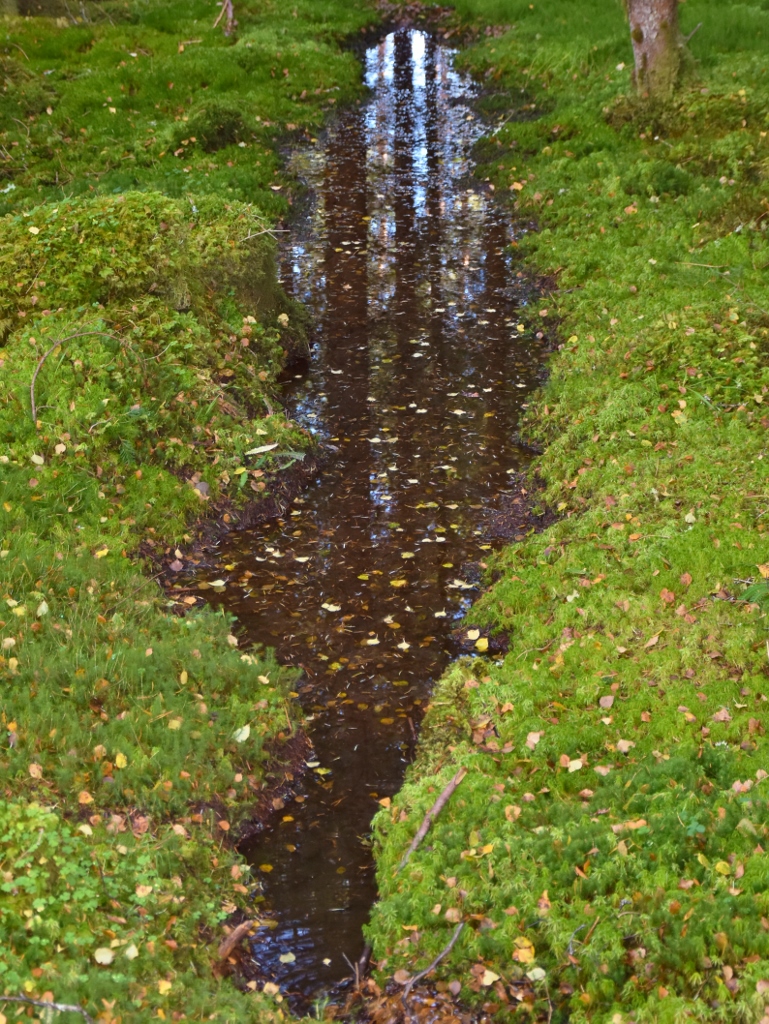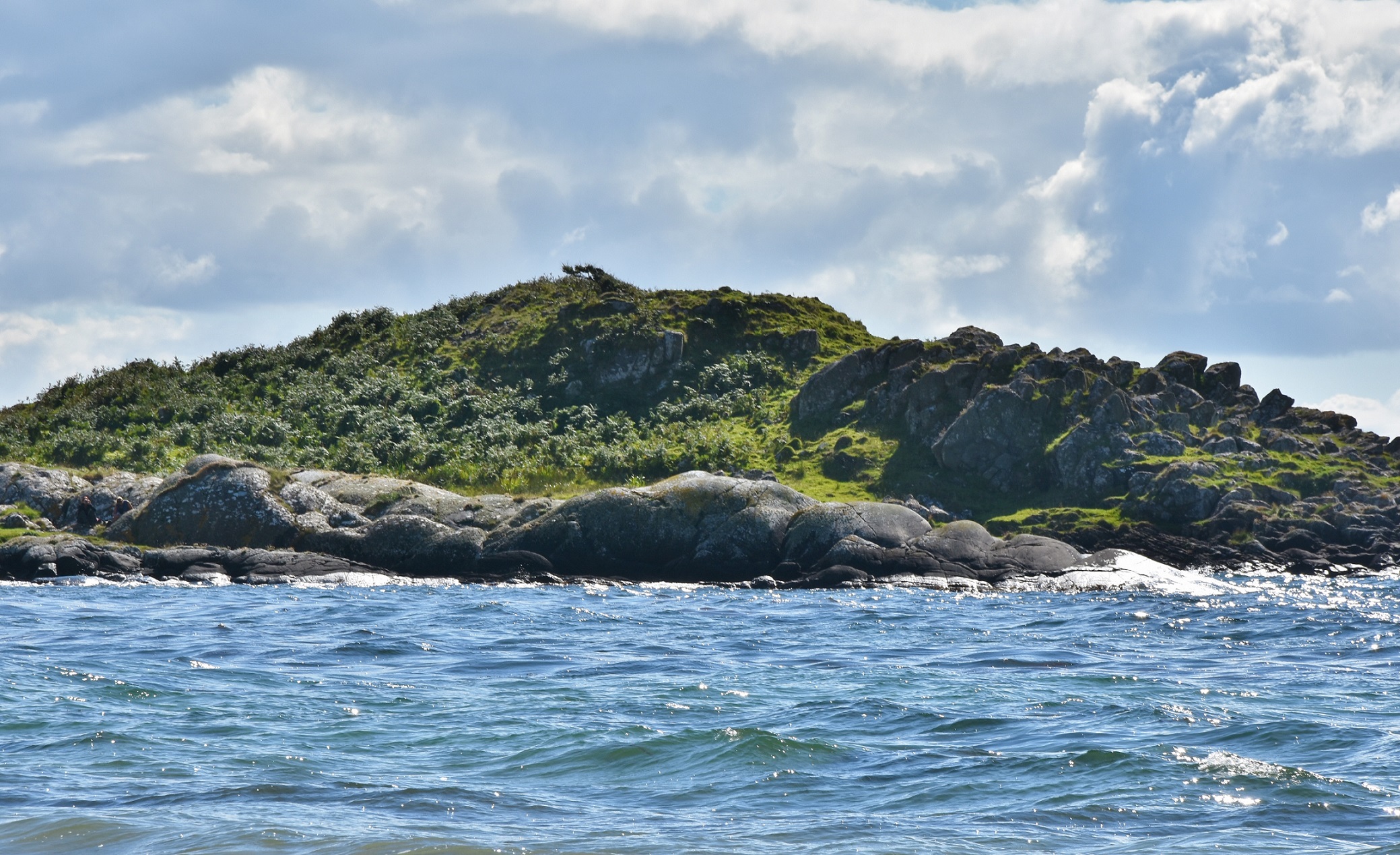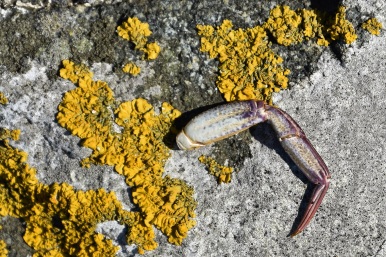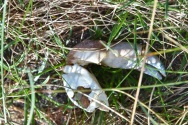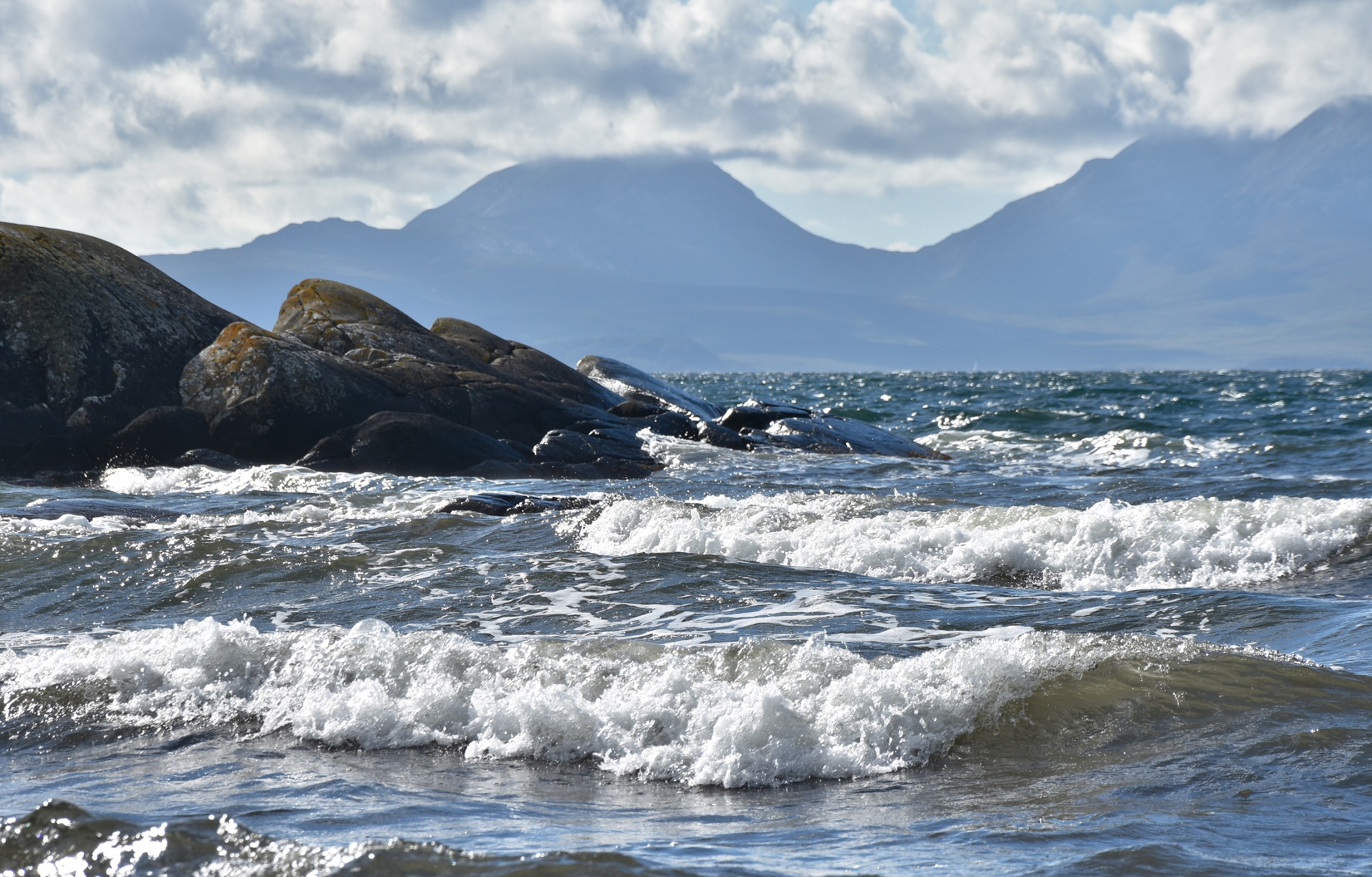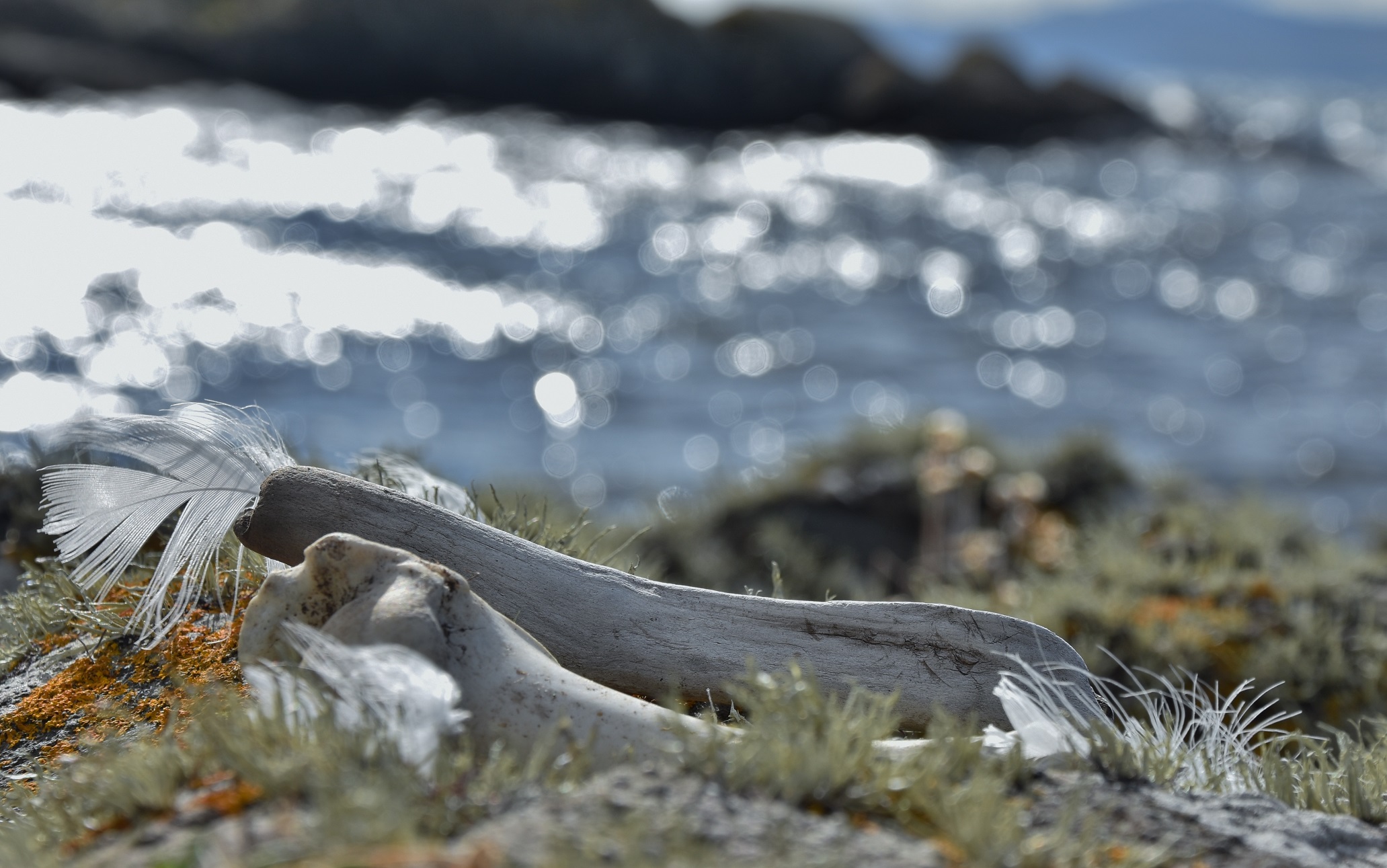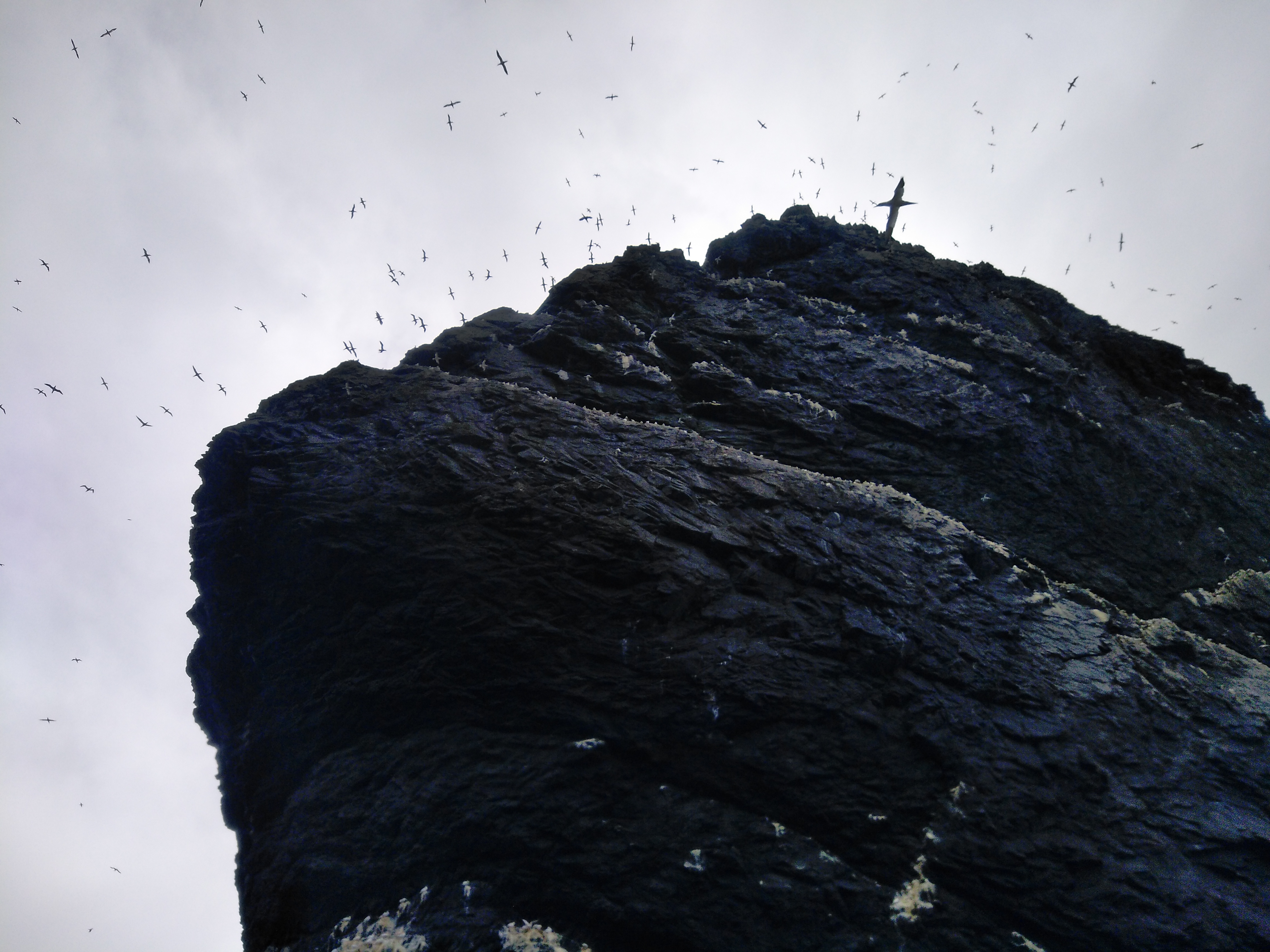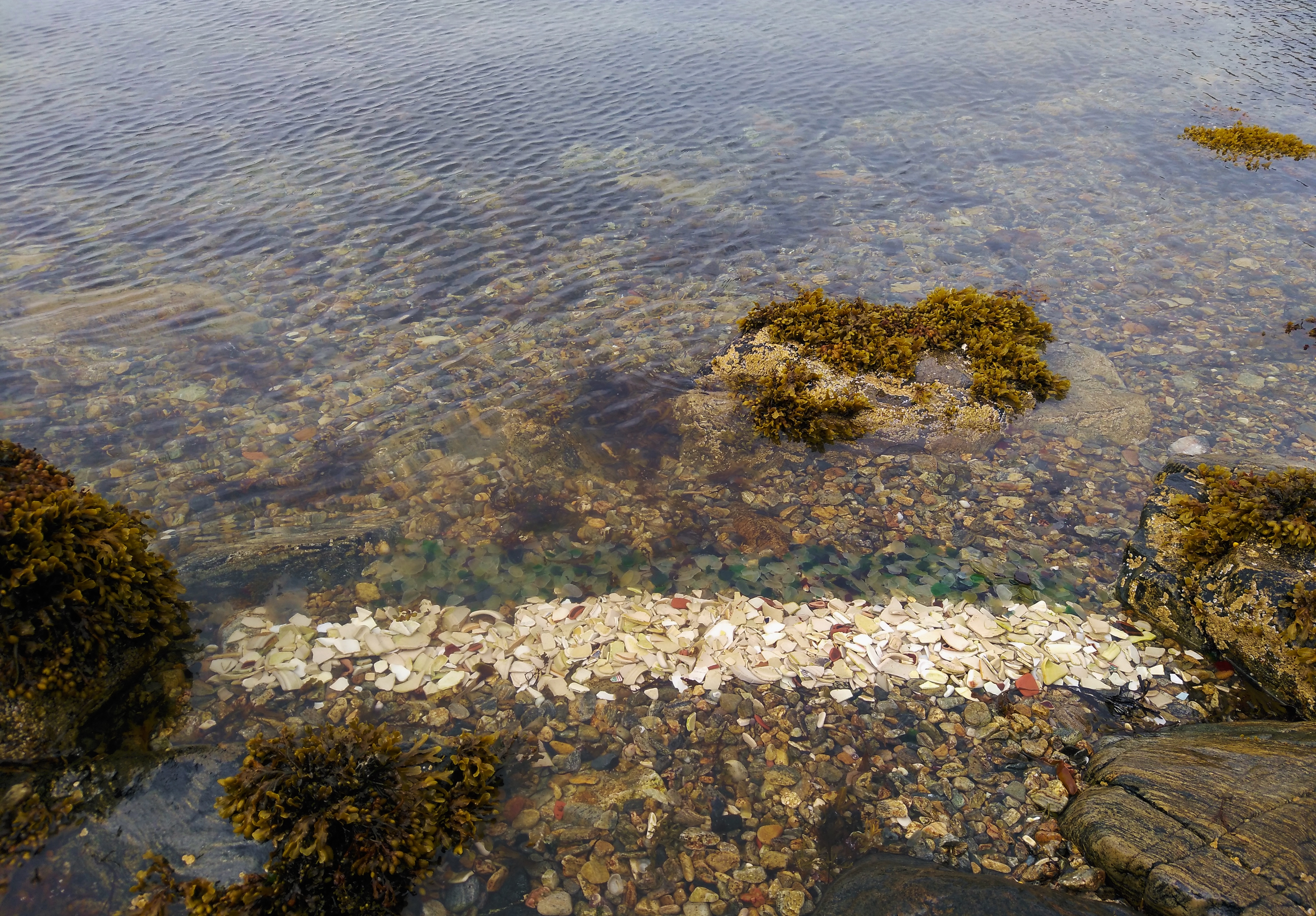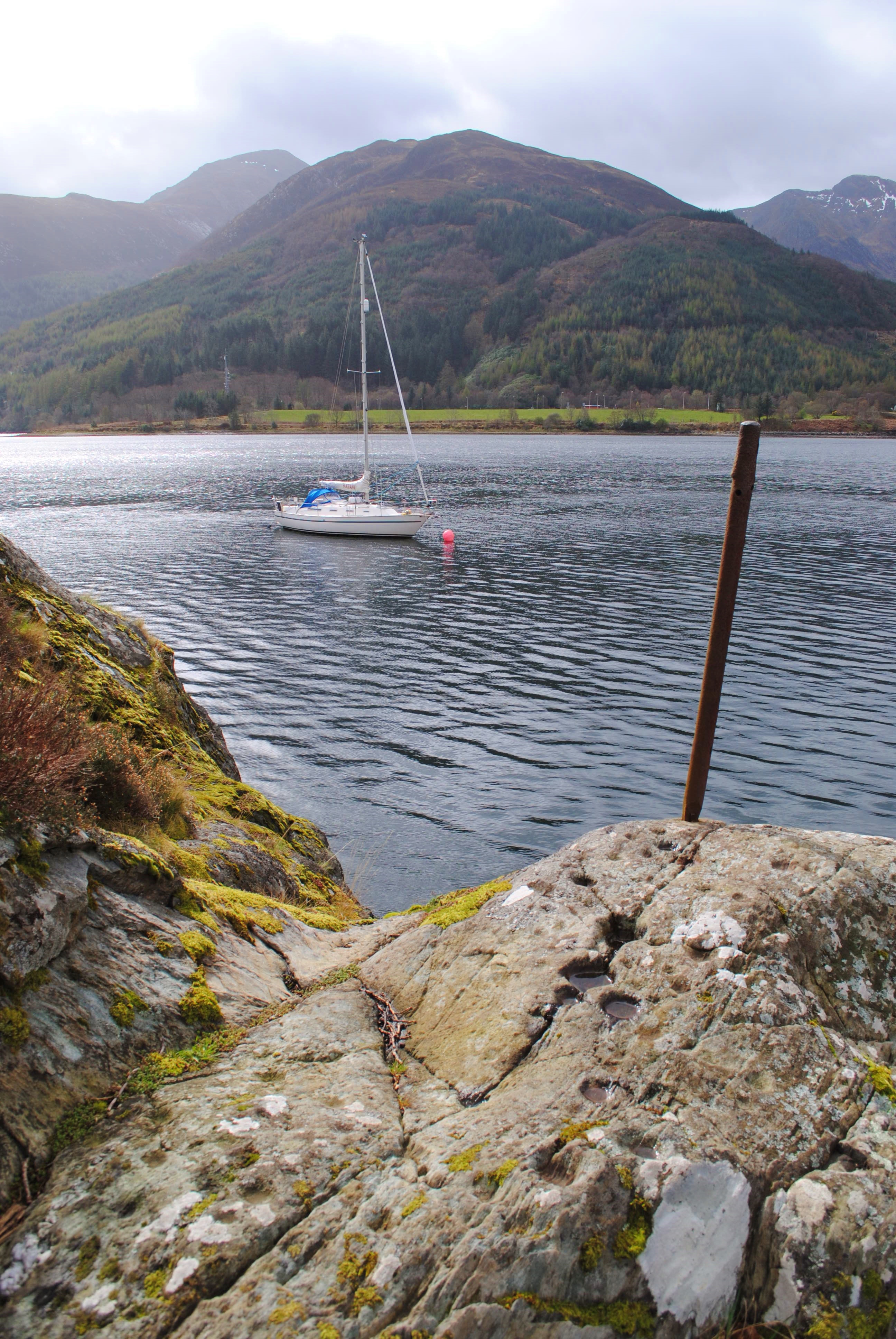
Coblaith furiously lashed the flank of the mud splattered beast as it stumbled up the slope. They had already lost two of their bulls. The first had plunged into a bog pool, thrashing and roaring as it sank deeper, until its silence was claimed by the underworld, the other fell off a narrow path threading though the rocks, crashing on slabs below, a twisted mix of leg and horn. Its remains were quickly butchered before pushing to the summit.

Another lash, lead ropes nose bleed pulling, the bulls heaved to the top where this early in the season there were still patches of snow and wind bite with the last presence of the Cailleach.

Early yet, dangerous, but the summit needed to be enclosed before she fully returned with the first new snow. The mountain top was where the deities stored powerful stones, treasures and trinkets, through which their energies could be drawn.

Coblaith quickly set the teams to work, iron chisels ringing on stone, thump of mallets on wedges as they split the rock. The bulls were spirited, oxen would have been easier, but the gods understood their power.

The persistent wind tugged at her braids, Coblaith sighed, looking north to the Orcades, it had taken years to persuade the group to encircle the mountain top. To go deep into Dithreabh Chat, to the peaks where the deities played, had been unthinkable but she had persuaded, threatened and promised and now they were greedy for power.

Seize the sacred top and all peoples of the Chat would fall beneath them. By Autumn she would know if her plan had worked.
* * *
Every Summer from birth the twins had traveled up from the mouth of the Strath to Dithreabh Chat. The journey started each year when the second light spark shower (lyrids) was seen high in the night sky.

With the cattle’s slow swaying pace, passing by spring lush hazel coppice’s and birch stands, they would take three nights to travel inland to the first grazings. In two moons time they would reach the pens on Ben Griam Beg, where the big gathering would begin.

Eithne shouted ‘Look there, the red ones, they are running down too quickly’. Uvan stopped scampering along the banks of the river, pausing together they watched the group of hinds, heavy with fawn.

Even at the distance, they could see the fear in their eyes, nostrils flaring, as they fled from two grey wolves. The riverside burst into sound, barking and growling from the groups large hunting dogs, cattle’s bellowing and calves alarmed bleats. With flashes of light, spears lifted and swords unsheathed, horns sounded and the wolves turned.
Lying on their backs, looking up at the clear night sky, they would see who would be first to spot a light spark. Uvan liked to tease his sister, pointing to the side ‘Look, there, two sparks at once !’. Eithne turned her head to a still empty sky, then thumped his arm ‘Uvan !’.
* * *

Among the mist, above his head, the ravens skipped and swirled along the raw shattered stone wall top. Gabran looked up and spat at the birds, an unwanted presence who reminded him of where those building the great wall had come.

In grey predawn light, his raiding group had burst into the small settlement of round houses, wielding iron sword and fire, they quickly torched roofs, then seized people as they exited. Cattle and people were herded alike to the great pens to the north. The youngest children had been taken in by members of his group, raised as their own, they would soon forget.

He felt little for them, clinging to the old ways, with their myths of the goddess and her black birds of time and death. Each night he chained the adults in the small hut on the mountain side and reveled in every unkindness.

Sooner they had his section of the great wall complete he could get off this sodden lump and return to his family on the coast.

Before Winter, the builders would know their fate, of those that survived, one in three would be taken into the group, the others would be sacrificed.

The dark birds played over head, Gabran spat.
* * *

I remember when mother would sit with us, when the miking was done, and the evening sun still warmed our skin. We would spin and chat at the side of the burn, a smoky fire keeping midges away. The low Summer sun, would dance through the leaves of the last stand of trees in the glen.

I would pester Maithgemm, all Summer, to tell of the beginning. Of the times before mothers mothers, when Coblaith took the mountain top from the deities. Every year, it would always be on a night after several long hot days when distant storms raged to the north and the sky flashed with light, she would remind us.

‘When Coblaith drove the great bulls through the upper glen to the sacred top the ancient trees hid them from above. Choosing the strongest bulls, Coblaith, wrapped their feet in cloth so the deities wouldn’t hear them coming.
Coblaith also knew that the deities spent much of their time on the top staring north at the green shifting skies above the Orcades, which mesmerized them, so she approached from the south.

When the lights stopped, they would wander across the Chat and interfere in the world of people.

The horned god loved to collect heads and horns leaving them in special places.
Day and night, without rest, they labored. At first the deities fought back, covering them in cloud and continuous rain, but as the days got longer and warmer they had to leave. When the deities returned, the wall was completed, and they couldn’t reach the sacred top.

All Winter the deities crashed furiously against the highs stone walls, flinging ice spears and sending there messengers of ill omen. But Coblaith had spilled the bulls blood across the wall tops and they could not enter. Every Winter the deities try to take back the sacred top and like Coblaith we must stay to hold it.
Now the deities are old and tired, like me, and perhaps we must be kinder to them.’
* * *

Standing in the citadel Talorc wrapped the heavy cloak tighter around himself. He already felt the early Winter deep in his bones. As a young man he had relished staying on the top telling stories, nålbinding and drinking with the small group who had to remain. Their continued presence resisted the gods, holding the top for generations, since Coblaith’s founding.
Despite the continuous peat fire burning in the round house, ice crystals formed from his breath and the smell of rot and damp pervaded everything. And now he doubted he would wake this spring.

Talorc’s thoughts drifted to his first year leading the group, a life time ago, when the gatherings were still large. When people traveling from across the Chat to maintain the fortifications, make exchanges and confirm marriages, and the top echoed with laughter and song.

Now the ground wetter and summers colder, the thin soils were sliding down, and the pools of water were getting darker and deeper.

For years there hadn’t been enough people to repair the great wall and many of the huts were now sagging or collapsed.

He doubted whoever followed him would be able to hold Ben Griam Beg from the deities much longer.

This is a response, a speculative archaeology, to walking in from Strath Naver to Ben Griam Beg in March 2018. Wildcamping below its southern flank, perhaps one of the few people who have slept in this landscape for over a thousand years, I woke up the next day to find after rainfall during the night the whole outer surface of the tent had a frozen skin. Carefully I opened the zip but the slight movements caused ice to slide, leaving a ring of water crystals around my little domain. It felt like a small moment of magic in this vast landscape.
Why did this particular archaeological site fascinate me so much?
Why was I drawn to travel to it?
In part, as Ben Griam Beg is one of the most difficult to visit prehistoric sites in Scotland, and as its highest hill fort, it captured my imagination, as a prehistorian, I felt compelled to experience where people lived 2000 years ago.
In part, because the site has never been investigated properly and I wondered what insights could be gained on the ground as opposed to scrutinizing a plan of the site, supping frothy coffee, in a library.
In part, to see what the Flow Country was like at this point and how the site related to its wider landscapes of Strath of Kildonan and Strath Naver.
In part, because I was seeking solitude and a night wild camping in a remote location is a freedom and privilege I treasure.
All these were important but what I keep coming back to
thinking about
wondering is
[when I visit rural and upland landscapes
so rich
in
prehistoric
remains]
how does the survival and presence of such archaeological sites inform debates about the future of communities and the challenges the world currently faces.
I worry, yes worry, that we do not engage enough with the rich prehistoric resources
(largely unknown, misunderstood and unvisited)
to be found in rural and upland places and how it should challenge us to reflect on our relationships with such landscapes. It seems to me that there is a missing wider dialogue about the ramifications of such ancient remains, what do they potentially tell us ?
The only full account of survey of Ben Griam Beg by Roger Mercer (1991) makes interesting reading, not least with the account of ‘challenges’ faced by the survey team due to the weather on the mountain. But as a ‘statement of fact’ the author is careful to present the evidence of survey and, largely due to limitations in knowledge (i.e. there has been no excavation, no dates are known for the different elements – some could be early Iron Age others could be early Historic period), it is difficult to interpret the site meaningfully in terms of anything other than a speculative archaeology. What is clear, however, is there are several phases of return and maintenance at the site, entangled memories of previous generations and former ages, which the account tries to evoke.
One of the few interpretations posited in the CANMORE record of Ben Griam Beg is:
‘The extreme remote and exposed situation of the complex probably indicates
a temporary refuge of man and beast under threat of attack,
rather than a permanent settlement.’
In the lack of evidence, and in the face of such statements, could a speculative archaeology challenge us to think differently. There has been so much focus in Scotland in recent years, and understandably so, on our relationships with rural and upland landscapes through the filter of the ‘Clearances’ or ‘Rewilding’. I do not belittle the importance of events in the recent centuries which have led to huge levels of rural depopulation, and recognise that there are historical injustices manifest in the ways our landscapes are managed. I do not underplay the importance of the debate about how we perceive, access and manages landscapes, in relation to degrees of ‘wildness’ and the complex range of ecological entanglements historically manifest in landscapes. But I wonder, why doesn’t the ramifications of the presence of prehistoric / deep time dimension of such landscapes appear to get meaningfully addressed in such debates.
Perhaps then there is a need for those of us who study, interpret, visit and are passionate about prehistoric sites to be more vocal about why they matter more broadly? #PrehistoryMatters
Our relationships with the prehistoric, have largely been mediated by academic research, often esoteric and obscure subjects which (until recent ‘impact’ agendas) had little interest in broader resonance or meaning. So perhaps speculative archaeology can close the gap and act as a method of formulating research questions.
How do questions we ask and the stories we tell change when we approach sites such as Ben Griam Beg, rather than random survivors of other eras, but as seeds of the future?

Thanks to Jo Clements and Timespan for inviting me to contribute to the Practicing Deep Time event. Preparing for the event and discussion with participants was an important contribution to formulating some of the views expressed here.
Mercer, R J 1991 ‘The survey of a hilltop enclosure on Ben Griam Beg, Caithness and Sutherland District, Highland Region’ in Hanson, W S & Slater, EA (Eds) Scottish Archaeology, New Perceptions, 140-52. Aberdeen University Press.




















































